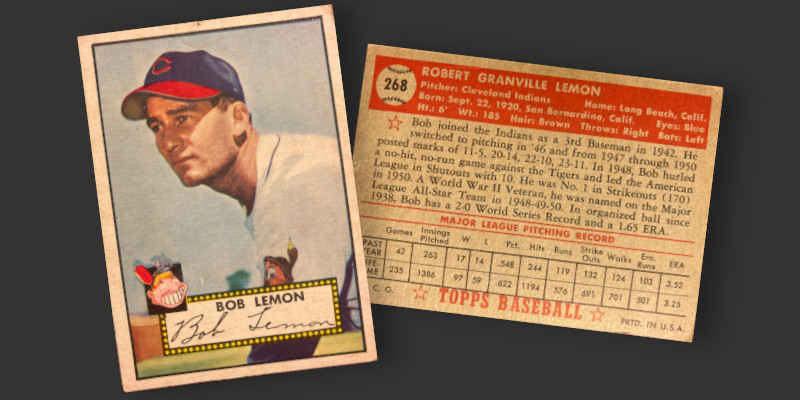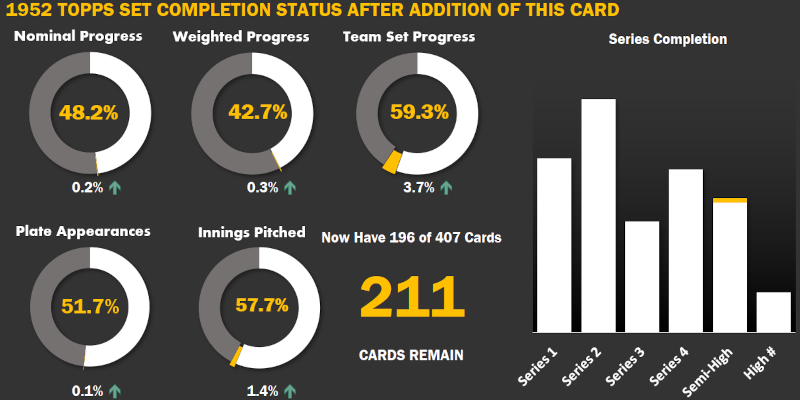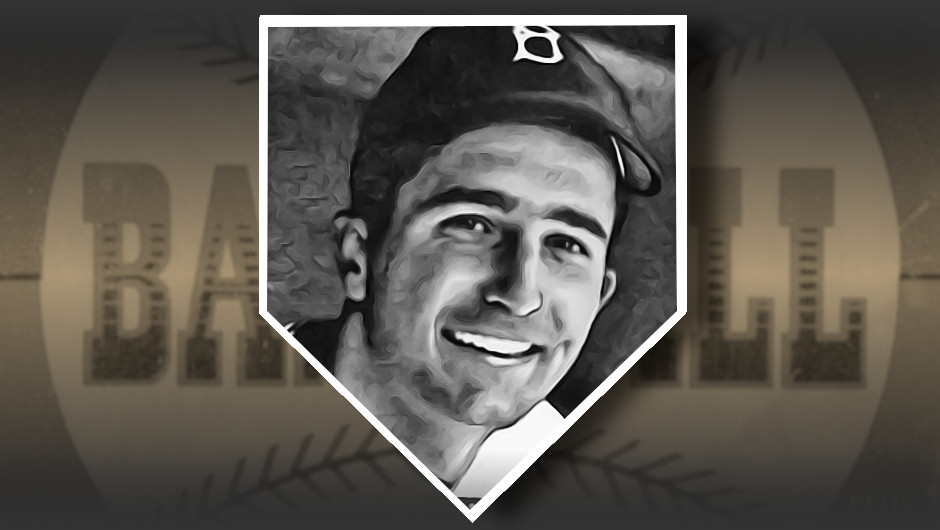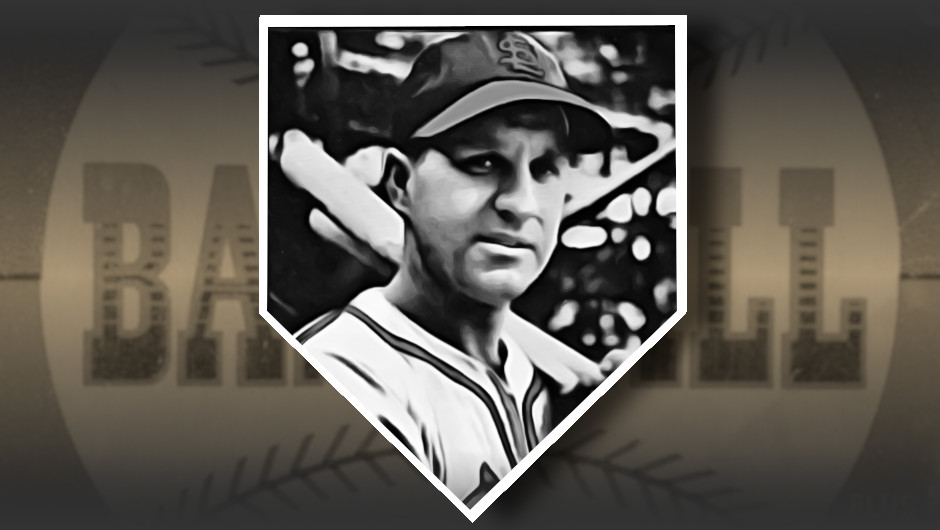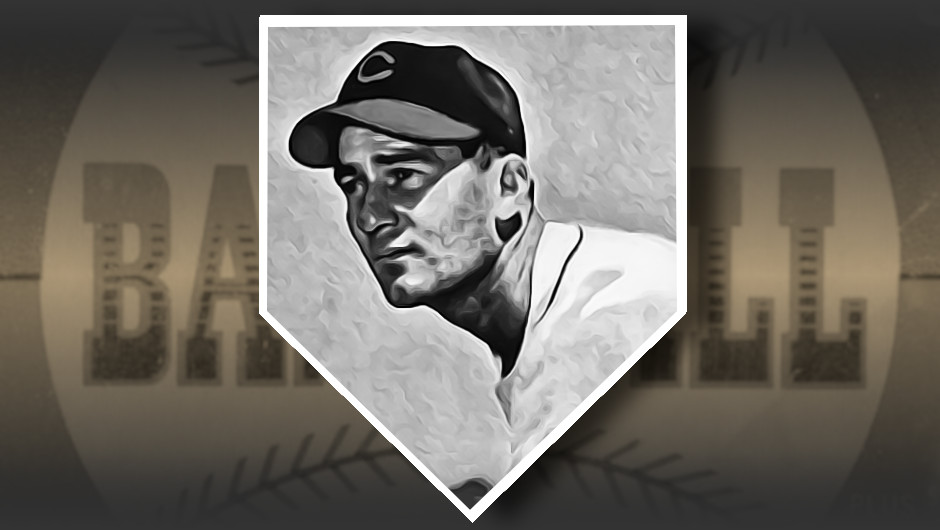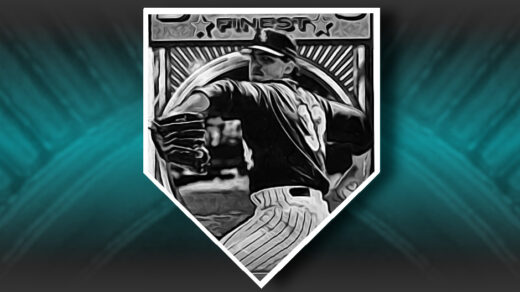Baseball and snacking on Cracker Jacks have been inseparable since a pair of songwriters who had never seen the game wrote Take Me Out to the Ballgame 116 years ago. Cracker Jack baseball cards issued in 1914-1915 are far and away the greatest cards issued with food prior to the advent of Goudey’s depression-era bubble gum cards. Cracker Jack didn’t start baseball or baseball cards, but its presence made both better. It is fitting then that another improvement came about on the diamond with a tangential connection to the caramel flavored snack.
The term “Cracker Jack” will bring a different image to anyone with a connection to the US Navy. The service’s enlisted ranks can often be found wearing their dress blue uniform, clothing that has changed very little since the popularization of baseball in the 19th century. It is iconic, with the term “navy blue” originating from the exact hue produced by these uniform’s mix of black and blue fibers. While technically identified as The U.S. Navy Enlisted Dress Blue Uniform, they are most frequently referred to as Cracker Jacks. This shorthand term comes from the child wearing a navy outfit pictured on boxes of Cracker Jack snacks.
One 1940s baseball player who donned a Cracker Jack for three years found his career irrevocably changed by it. Bob Lemon was a high school baseball phenom, playing almost any position with ease and terrorizing opposing pitching with his bat. The Cleveland Indians took notice, signing him as a 17 year-old and putting him to work in their farm system as a third baseman. For three and a half years he worked his way up the minor league ranks until reaching Cleveland as a late season callup in 1941. He debuted as (and remained) a pinch hitter that year, going 1 for 4 at the plate. A similar situation developed the following season with Lemon again getting another cup of coffee and turning in a 0-for-3 performance.
The manpower needs of World War II cut short these sporadic MLB appearances and Lemon was inducted into the Navy for 1943-1945. He played plenty of baseball during this period, finding organized games available wherever he was stationed. As in high school he played any position that was open, but saw most of his action at third base. Other major leaguers witnessed his versatility and would remember it when he returned to civilian life.
After the war, Lemon was slotted into Cleveland’s starting lineup as a centerfielder. His time in the outfield lasted all of 10 games, as that was the amount of time it took for top-flight pitchers to realize he had no ability to adjust his timing for off-speed pitches. Seeing as how his Major League chances were rapidly diminishing, Lemon was asked to demonstrate the pitching that had been remembered by fellow Navy veteran teammates.
Without much in the way of practice or even a demonstration session, Lemon was thrown into the fire to pitch against MLB hitting. He was given the ball for three innings of mop-up duty in a 9-3 loss against the St. Louis Browns, a game in which he allowed only one run in three innings. He would pitch in 31 more games that season, logging a 2.46 ERA in the process. Two years later he had become the workhorse that carried the Indians to the 1948 World Series title. By 1976 he was in the Hall of Fame.
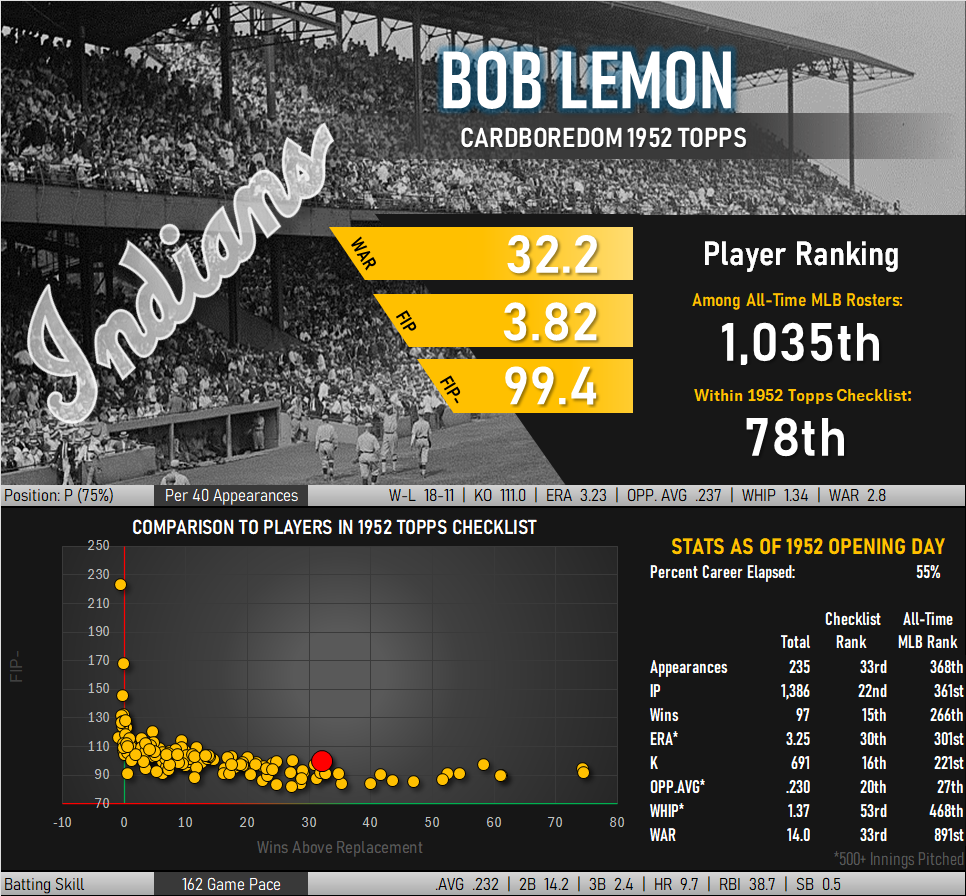
Lemon probably would not have stuck around much longer if his pitching skills had gone unnoticed. However, that pop he showed in his bat made him an excellent choice for pinch hitting duties whenever a pitcher was going to be replaced. He boasted a career .288 average as a pinch hitter with a couple home runs and an OPS+ of 118. Topps recognized this and made a point of showing him taking a swing in its 1951 Major League All-Stars release.

Bob Lemon’s Popular Photo
While Topps had used an image of Lemon batting in a 1951 release, it looked towards a more conventional shot of the pitcher awaiting a catcher’s sign for 1952. So did everyone else. I have found at least a half dozen other pieces of memorabilia using the same picture.
Ice cream maker Dixie used the image as part of a set of large photo premiums that could be obtained by mailing in a dozen lids from used ice cream containers. The lids themselves featured portraits of players, with Lemon included in the checklist. Dixie’s artists used the same picture selection for the lid and premium and did an impressive job removing the shadow from the bill of Lemon’s cap on the tighter lid shot.
The ever present 1947-64 Exhibits cards feature Lemon in two “poses,” both originating from selective cropping of the original image. The W603 Sports Exchange issue of 1946-1949 includes what might be considered Bob Lemon’s rookie in a 7×10″ dual-player piece shared with Red Rolfe. The image proved so popular (or readily available) that Front Row resurrected it in 1994 as both signed and unsigned versions for its All-Time Greats set. Lacking team licensing rights, Front Row removed the Cleveland logo from Lemon’s hat and did a rather noticeable job of blotting out Chief Wahoo from the left sleeve.
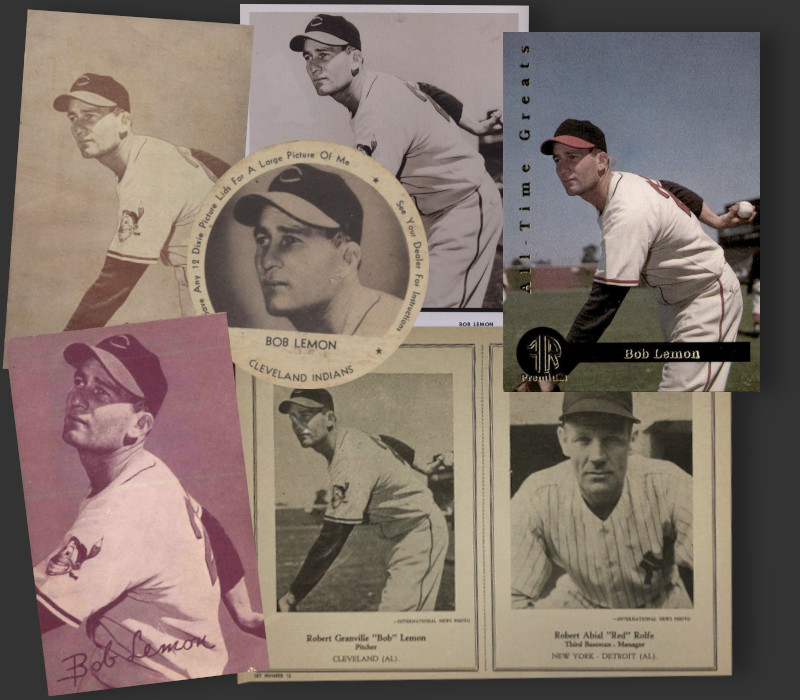
The photo selection and coloring of the version Topps put out in 1952 makes it one of the better iterations of the image. My ’52 Lemon looks pretty nice and presents as a solid VG condition piece of cardboard. What keeps it from actually achieving such a grade is a pinhole in the top border. Sweet. If I ever get a chance to meet vintage pinhole specialist Mookie Chillson we will have something to talk about.
